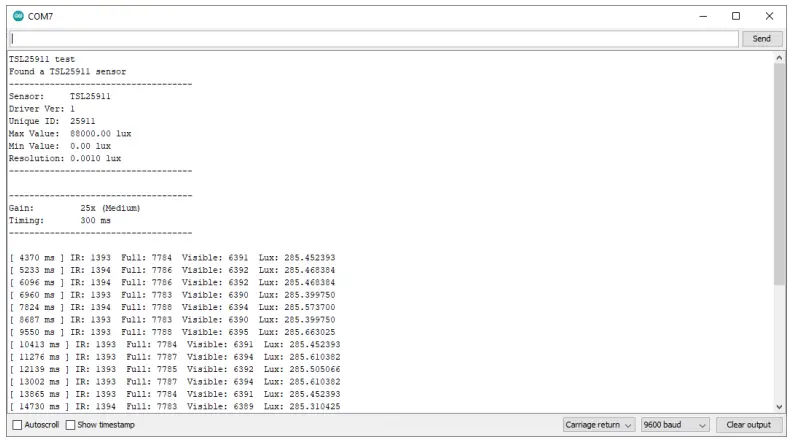TSL25911 AMBIENT LIGHTSENSORTSL25911 Board User Manual
Purpose of the Document
The purpose of this document is to explain the TSL25911 ambient light sensor board. This document contains the features of the TSL25911 sensor board and how to use it to detect ambient light.
Document History
| Version | Author | Date | Description |
| A | 5G HUB | 06.27.2021 | Initial Document |
Package Contents
1.1 TSL25911 Sensor board• TSL25911 sensor board1.2 DownloadArduino sketches for the TSL25911 can be downloaded from the following website:https://www.github.com/5ghub/5G-NB-IoT/tree/master/KitSketches
To use the board with Arduino IDE and starts running Arduino projects and sketches, install the following software:Install Arduino IDE for Windows from the following website:https://www.arduino.cc/en/Main/Software
Download and install the Arduino library (5G-NB-IoT_Arduino.zip) here:https://github.com/5ghub/5G-NB-IoT
Introduction
The TSL25911 ambient light sensor board is a compact board that senses light intensity. The board is based on the TSL25911 module which is a highly sensitive light-to-digital converter that transforms light intensity into a digital signal. The board provides digital ambient light sensing (ALS) that approximates the human eye’s response to light intensity. It enables accurate ALS measurements when exposed to very low light such as when operating behind light-attenuating materials. It provides accurate ALS measurements across a wide range of light intensities due to its ultra-high sensitivity, wide dynamic range, and ability to operate in bright sunlight.
Feature Highlights
- High light-detecting sensitivity which is ideally suited for operation behind spectrally distorting material
- Enables low-light (377 lux) to bright sunlight operation
- Dual Diode:o Broadband photodiode – visible & IR lighto Infrared photodiode – IR light
- Programmable analog gain and integration time
- 600M:1 dynamic range
- Two internal Interrupt sources
- Programmable upper and lower thresholds
- Interrupt includes programmable persistence filter
Typical Applications
- Ambient Light Sensing (ALS)
- Digital signage
- White goods
- Medical and industrial instrumentation
- Keyboard illumination control
- Solid-state and general lighting control
- Printer paper detection
- Internet of things
Hardware Board and Case Diagram
| Pin # | Feature | Description |
| 1 | VCC | Input voltage (3.6V-5V) |
| 2 | 3V3 | Output 3.3V |
| 3 | GND | Ground |
| 4 | SCL | Clock for I2C |
| 5 | SDA | Data for I2C |
| 6 | INT | Interrupt, Open-drain output (active LOW) |
Connecting using the I2C
I2C uses only two wires; SCL and SDA. The sensor board can be interfaced using these two wires only as depicted in this figure. Make sure to connect the VCC and GND of the board to a source of 5V and GND.
Working with Arduino
The sensor board can work with the 5G NB-IoT board or any other Arduino board. Simply connect VCC and GND to the sensor board and wire the two I2C wires between the Arduino board and sensor board.Run an Arduino sketch, and you will see all readings from the TSL25911 ambient light sensor.The following shows the Arduino sketch for the TSL25911 sensor board sensing light.
TSL25911 Board v1.0Copyright © 5GHUB.US
References
[xyz-ips snippet=”download-snippet”]
